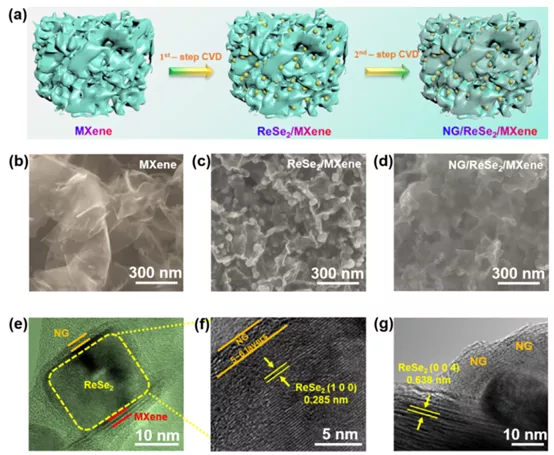
hotline:
17715390137
Tel/Wechat:
18101240246 (Technology)
0512-68565571
Email:mxenes@163.com (Sales Engineer)bkxc.bonnie@gmail.com
Scan the code to follow or search the official account on WeChat:
2D Materials Fronrier After paying attention,
click on the lower right corner to contact us,
Enter enterprise WeChat.
Professional Services Online

已传文件:photo/2020610104151275.png
【Research Background】
Considering the high cost, unevenness and distribution, and large consumption of lithium resources, it is imperative to find a new and reliable electrochemical energy storage system. Sodium and potassium, as similar substances of lithium, have higher abundance in nature and are considered as one of the most promising alternatives. In particular, K+/K has a lower standard oxidation potential (-2.93 V) than Na+/Na (-2.71 V), so potassium ion batteries have higher energy density (KIBs). However, a larger ion radius will affect the insertion and extraction of ions in the electrode material, which will cause huge volume expansion and pulverization, so the dynamic characteristics during charge and discharge will be weakened. Finding suitable materials is the research focus of researchers in recent years. Carbon-based materials including graphene and nitrogen-doped carbon have excellent rate performance but are limited by their lower energy density; transition metal chalcogenides with layered structure due to their higher theoretical capacity value (~1000 mAh g -1) It has received extensive attention. Among them, ReSe2 of 1T phase has some unique physicochemical properties, such as weaker interlayer forces and larger interlayer distance (~0.7 nm) have greater potential. As a rapidly developing two-dimensional transition metal carbide and nitride material system, MXenes has already shined in the field of energy storage due to its combination of metal conductivity and rich functional groups, especially 3D MXene with a porous structure because of its Sufficient specific surface area is considered to be beneficial for K ion storage.
【Achievement Introduction】
Recently, Professor Jingyu Sun and Professor Wanjian Yin of Soochow University published a research paper titled: Designing N-doped graphene/ReSe2/Ti3C2 MXene heterostructure in the Journal of Energy Chemistry, a journal of excellence in domestic journals. The thesis reports that a three-dimensional MXene is used as a structural support to directly synthesize nitrogen-doped graphene and ReSe2 composites by chemical vapor deposition. This heterostructure electrode has good performance for the anode material of potassium ion batteries.
【Graphic introduction】

Figure 1. Morphological characterization of NG/ReSe2@MXene heterostructure.

Figure 2. Structure and element characterization of NG/ReSe2@MXene.

Figure 3. NG/ReSe2@MXene electrochemical performance.

Figure 4. Analysis of NG/ReSe2@MXene‘s potassium storage mechanism.

Figure 5. ReSe2, G@ReSe2 DFT simulation.
【Summary of this article】
In this paper, a new NG/ReSe2/MXene structure was prepared by in-situ continuous CVD technology. 1T-ReSe2 nanoparticles have excellent rate performance and excellent reversible capacity during cycling when used as a negative electrode for potassium ion batteries through the strong interface interaction between nitrogen-doped graphene and the 3D porous structure. The in-situ Raman, ex-situ XPS, XRD and TEM were used to explore the potassium ion storage mechanism, and the outstanding K+ ion of the composite was confirmed by DFT calculation.
Literature link:
https://doi.org/10.1016/j.jechem.2020.04.071
Source: MXene Frontie
This information originates from the Internet for academic exchange only. If there is any infringement, please contact us to delete it immediately
| Reminder: Beijing Beike New Material Technology Co., Ltd. supplies products only for scientific research, not for humans |
| All rights reserved © 2019 beijing beike new material Technology Co., Ltd 京ICP备16054715-2号 |